#Depigmenting agents
Text
Getting Brighter Skin in Hyderabad: Easy Skin Lightening Treatments

In Hyderabad, where everyone loves having beautiful skin, there are simple ways to make your skin glow. Let's explore some easy and effective skin lightening treatments that people in the city love.
Chemical Peels:
Chemical peels are like magic potions for your skin in Hyderabad. They use special liquids to remove old skin, making it look fresh and bright. It's a bit like giving your skin a makeover, and many people in Hyderabad love how it helps with dark spots.

Laser Skin Treatment:
Laser treatment is like using a superhero light to fix your skin. The laser targets dark spots and makes your skin look fantastic. Lots of people in Hyderabad are choosing this treatment because it's quick and works wonders.
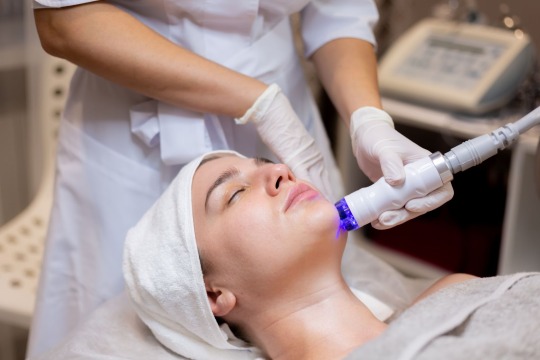
Microdermabrasion:
Microdermabrasion is like giving your skin a gentle scrub. Tiny crystals make your skin smoother and help with dark spots. People in Hyderabad really like this treatment because it makes their skin feel soft and look brighter.
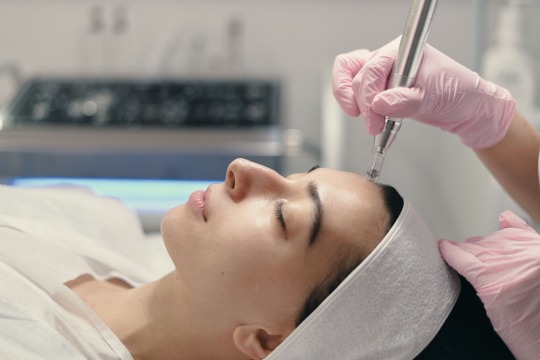
Creams from the Doctor:
Sometimes, doctors in Hyderabad give special creams to put on your skin. These creams have powerful ingredients that can help with dark spots. It's like having a secret weapon for your skin that your doctor gives you.
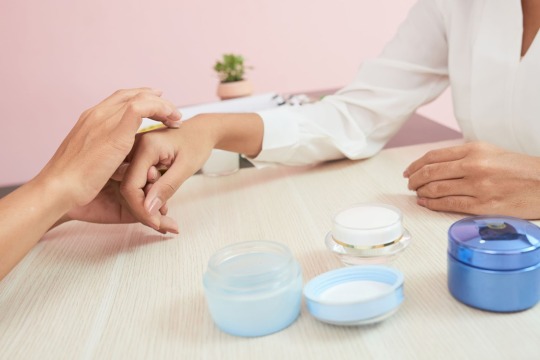
Freezing Treatment:
Freezing treatment is a cool way to deal with dark spots. It freezes them away, and people in Hyderabad like it because it's quick and works well for small spots.

PRP Therapy:
PRP therapy is like giving your skin a boost from your own blood. They take a little bit of your blood, do some magic to it, and put it back on your skin. It's becoming popular in Hyderabad because it makes your skin look fresh and bright.
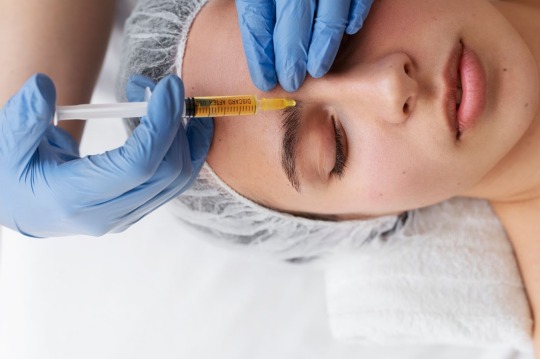
Choosing the Right Treatment:
Before trying any treatment in Hyderabad, it's important to talk to a skin expert. They will check your skin and help you choose the best treatment. Everyone's skin is different, so it's like finding the perfect fit for your skin.

Conclusion:
Hyderabad is a city where people love taking care of their skin. With easy treatments like chemical peels, lasers, and creams from the doctor, getting brighter skin is simple. Just talk to a skin expert, and soon your skin will be glowing like the beautiful city of Hyderabad! And for those looking for trusted skincare solutions, Dr. Venus is a brand that many in Hyderabad rely on for effective and gentle products. Consider exploring their range for a skincare routine that aligns perfectly with the charm of Hyderabad and leaves your skin feeling refreshed and radiant. Book an appointment now to start your journey towards healthier and brighter skin!
#Hyperpigmentation treatment#Skin whitening techniques#Pigmentation reduction method#Melasma treatment options#Lightening dark spots#Skin tone correction#Dermatological lightening treatments#Chemical peels for pigmentation#Laser skin lightening#Topical skin lighteners#Natural skin whitening remedies#Depigmenting agents#Vitamin C serums for brightening#Hydroquinone alternatives#Glycolic acid for pigmentation#Kojic acid products#Azelaic acid for skin lightening#Microdermabrasion for hyperpigmentation#Retinoids for even skin tone#Skin lightening creams#Intense pulsed light (IPL) therapy#Laser resurfacing for pigmentation#Dark spot correctors#Professional skin lightening treatments
0 notes
Text
What are skin-lightening treatment?
Skin-lightening treatments have gained significant popularity in recent years, driven by the desire for an even skin tone and the reduction of pigmentation issues. Dr. Neha Agrawal, a renowned dermatologist, sheds light on the various aspects of these treatments, their benefits, and potential risks.
Understanding Skin-Lightening Treatments
Skin-lightening treatments aim to reduce melanin, the pigment responsible for skin color, to address issues such as hyperpigmentation, dark spots, and uneven skin tone. These treatments can be categorized into topical agents, cosmetic procedures, and natural remedies.
Types of Skin-Lightening Treatments
1. Topical Agents:
— Hydroquinone: A commonly used depigmenting agent that decreases the formation of melanin.
— Retinoids: Vitamin A derivatives that promote cell turnover and lighten pigmentation.
— Vitamin C: An antioxidant that brightens the skin and reduces dark spots.
— Kojic Acid: A natural compound that inhibits melanin production.
2. Cosmetic Procedures:
— Chemical Peels: Use of acids to exfoliate the skin and reduce pigmentation.
— Laser Therapy: Targeted light therapy to break down melanin deposits.
— Microdermabrasion: Mechanical exfoliation to remove the outer pigmented layers of the skin.
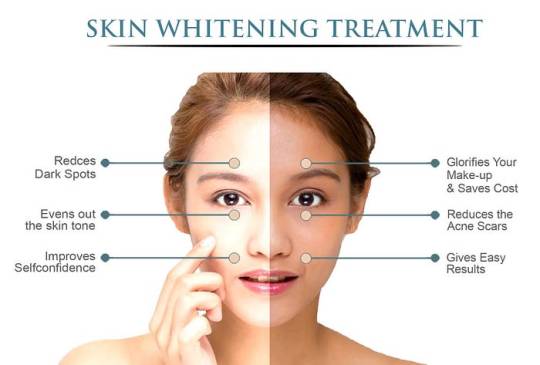
3. Natural Remedies:
— Lemon Juice: Contains vitamin C and citric acid, which have lightening properties.
— Aloe Vera: Helps to reduce pigmentation and soothe the skin.
— Turmeric: Has anti-inflammatory and skin-brightening effects.
Benefits of Skin-Lightening Treatments
- Improved Skin Tone: Achieve a more even complexion by reducing dark spots and pigmentation.
- Enhanced Confidence: Many individuals feel more confident with a clearer, more uniform skin tone.
- Youthful Appearance: Treatments can make the skin look younger and more radiant.
Potential Risks and Considerations
- Skin Irritation: Some treatments can cause redness, itching, or allergic reactions.
- Sun Sensitivity: Skin-lightening treatments often make the skin more sensitive to sunlight, necessitating the use of sunscreen.
- Overuse Risks: Prolonged use of certain agents like hydroquinone can lead to ochronosis, a condition where the skin becomes darker.
Conclusion
Skin-lightening treatments offer a range of options for those looking to achieve a more even skin tone. However, it is essential to approach these treatments with caution and under professional guidance. Dr. Neha Agrawal emphasizes the importance of consulting with a dermatologist to choose the safest and most effective treatment tailored to individual skin needs.
#best skin doctor near me#best skin specialist in mansarovar jaipur#best skin doctor in mansarovar jaipur#best dermatologist in mansarovar jaipur#skin specialist in mansarovar jaipur#dr.neha agrawal in mansarovar jaipur#dermatologist in mansarovar jaipur#best dermatologist in jaipur#hair treatment in mansarovar jaipur#skin specialist near me
0 notes
Text
The Winning Cosmeceutical Combo For Treating Hyperpigmentation and Brightening Your Skin'sComplexion: Kojic Acid & Alpha Arbutin
Hyperpigmentation causes the appearance of dark patches or spots on the skin. The excess production of melanin causes the skin to darken. Hyperpigmentation can be triggered by acne, hormonal changes, and aging.
Moreover, hyperpigmentation is an irritating skin condition that affects millions of people worldwide. This skin darkening can be caused by several factors. Introducing “Dermisque 3X DARK SPOT CORRECTOR FACE Serum ” - a Kojic acid serum for skin whitening that treats hyperpigmentation and melanomas. It’s designed to whiten the skin and eliminate those pesky dark patches and spots.
If you have hyperpigmentation, then you are not alone. Whew, this is a lot of information to take in. Let's break it down: Dermisque 3X DARK SPOT CORRECTOR FACE Serum contains Kojic acid and Alpha Arbutin together to respond actively on absorption easily into the skin. It resides in the class of 'depigmenting agents', primarily applied to treat and lighten melasma and hyperpigmentation. Brown or gray patches, primarily on the face, are caused by melasma, a pigmentation disorder. Arbutin inhibits the production of melanin and is used as a skin-lightening agent.
Pigmentation is caused by the build-up of melanin in the skin, which gives it a dark tone. They can be caused as a result of exposure to UV rays or other things and sometimes they are hereditary. You might have dark spots on your face that you don't like and are trying to get rid off; let's take a closer look at two ingredients that even dermatologists have recognized as important for addressing skin concerns: Alpha-Arbutin and Kojic Acid. These complexion-brightening ingredients work wonders on your skin in their unique ways.
But, do Kojic acid and alpha-arbutin work for pigmentation? Does Arbutin have the ability to reduce pigmentation? Find out how to get rid of dark spots and get fairer skin without spending money on expensive products.
Chemically obtained Kojic acid is a by-product of Aspergillus oryzae ( kōji mold ) that has properties similar to arbutin and helps lighten pigmentation. Alpha-Arbutin is a derivative of hydroquinone and works as a topical skin-brightening agent derived from dried plant leaves, specifically blueberry, cranberry, and bearberry.
In Japan, it has been used for centuries.
Let's understand hyperpigmentation:
Before we throw into the details of Kojic Acid and Alpha Arbutin, let's briefly understand what hyperpigmentation is.
Hyperpigmentation occurs when there is an overproduction of melanin, the pigment that discolors our skin. Factors mostly influenced, such as sun exposure, hormonal changes, and skin conditions. That can trigger excess melanin production, resulting in uneven skin tone and dark spots.
Kojic Acid - Your Hyperpigmentation's Worst Enemy:
Kojic Acid has gained significant recognition for its exceptional abilities in combating hyperpigmentation. Kojic Acid is derived from various fungi species of Acetobacter, Aspergillus, and Penicillium. It works by inhibiting the production of tyrosinase (also called Polyphenol Oxidase - PPO), an enzyme involved in melanin synthesis. By blocking the activity of this enzyme, Kojic Acid effectively lightens dark spots and exfoliates your skin tone.
When searching for the best Kojic acid serum for skin hyperpigmentation, consider one that contains a considerable concentration of Kojic Acid as the active ingredient. Look for a product that is formulated to penetrate deeply into the skin, and let Kojic Acid reach its target and deliver optimal results.
Alpha Arbutin - Illuminating Your Complexion:
Another powerful ingredient that pairs well with Kojic Acid is Alpha Arbutin. Derived from the bearberry plant, α-Arbutin works by inhibiting the activity of tyrosinase, similar to Kojic Acid, which reduces melanin synthesis.
However, α-Arbutin is known for its mild yet effective brightening properties, making it an excellent choice for individuals with sensitive skin.
The use of a Dermisque 3X DARK SPOT CORRECTOR FACE Serum for hyperpigmentation that incorporates both Kojic Acid and α-Arbutin can help target hyperpigmentation from multiple angles.
Together, they work synergistically to inhibit melanin production and promote a more even and radiant complexion.
What Is Glutathione and What Are The Benefits of Dermisque 3X Gluta Glow Serum?
Glutathione is a health supplement made from the amino acids glycine, cysteine, and glutamic acid. It is recommended by dermatologists for its anti-ageing properties and ability to reduce fine lines and wrinkles, as well as help in skin whitening.
Besides topical treatments, oral glutathione tablets for skin whitening can also play a significant role in brightening the skin and reducing hyperpigmentation. Dermisque 3X Gluta Glow Serum are known for their skin-whitening properties and are often recommended by dermatologists for individuals seeking a more uniform complexion.
Glutathione is a naturally occurring antioxidant that helps to neutralize free radicals and prevent damage to the skin. It has been proven through various studies that Glutathione has been shown to reduce melanin production, leading to more even skin tone and reduced dark spots and hyperpigmentation.
It also inhibits melanin production, leading to a reduction in hyperpigmentation and a brighter skin tone. Dermisque 3X Gluta Glow Serum provides a convenient and effective way to supplement your skincare regimen and achieve a more luminous complexion.
Dermisque 3X GlutaGlow Serum ( Glutathione + Lemon Peel Extract + Vitamin C)
Lysolecithin
Promote skin hydration
Repair Skin Barrier Damage
Lighten acne-related Hyperpigmentation
Lighten Acne Scars & Dark Spots
Liposomal Glutathione
Improve your Skin Brightening
Improve Skin Tone & Lighten Age Spot
Anti-aging detoxifiers remove wrinkles and fine lines
Lemon Peel Extract & Vitamin C extract
Exfoliate dead skin cells
Improve skin rejuvenation
Boosting collagen formation
Prevent skin sagging from aging
Choosing the Best Kojic Acid Infused Serum for Melasma- Dark Spot Correctors.
If you're dealing with melasma, which causes larger patches of darkened skin, it's important to choose a Kojic acid serum that is designed to address this issue. Look for a product that has a higher concentration of Kojic Acid, as well as other skin-brightening ingredients like α-Arbutin.
It's also important to consider the overall formulation of the serum to ensure it is suitable for your skin type. Opt for a serum that is lightweight, non-comedogenic, and moisturizing to maintain the skin's hydration levels while effectively treating melasma.

How to Incorporate Dermisque 3X DARK SPOT CORRECTOR FACE Serum to Your Skincare regimen?
In the quest for a brighter and more even complexion, the combination of Kojic Acid and Alpha Arbutin is a winning cosmeceutical combo for treating hyperpigmentation. This powerful combo of Dermisque 3X DARK SPOT CORRECTOR FACE Serum for hyperpigmentation work together to inhibit melanin production, lighten dark spots, and promote a more radiant skin tone.
Alongside topical treatments, oral supplements like Dermisque 3X Gluta Glow Serum can further enhance the skin-brightening process. When choosing products, consider the concentration of active ingredients and the overall formulation to ensure optimal results. Embrace the power of these ingredients and take the first step towards achieving a glowing and uniform complexion.
Conclusion
In the journey to achieve a scintillant and even youthful complexion, the combination of Kojic Acid and Alpha Arbutin with Dermisque 3X DARK SPOT CORRECTOR FACE Serum proves to be a formidable age-defying Combos in cosmeceutical active ingredients.
By incorporating a high-quality Kojic acid serum or serum into your skincare routine, you can target and treat specific areas of concern, such as melasma, while promoting an overall more radiant skin tone.
However, it's important to remember that skincare is not limited to just topical treatments alone. The use of oral supplements, such as Dermisque 3X Gluta Glow Serum, can provide a complementary and holistic approach to achieving a brighter complexion. Glutathione, with its potent antioxidant properties, helps to neutralize free radicals and reduce melanin production from within, resulting in a more luminous and uniform skin tone.
As you commence on your journey to treat hyperpigmentation and brighten your skin's complexion, remember that consistency and patience are key. Skincare is a gradual process, and results may vary from person to person. Embrace the power of Kojic Acid and Alpha Arbutin, along with other effective ingredients, and with time and dedication in skincare, you can achieve a more radiant, even-toned, and confident skin complexion.
#Dermisque Kojic acid & Arbutin#best kojic acid serum for hyperpigmentation#best kojic acid serum for melasma#kojic acid serum for skin whitening#Dermisque Glutathione Tablets#glutathione tablets for skin whitening#advanced dermatology skin care#dermisque skincare#face care routine#dermatology skincare products#dermisque 3x skin hydrating face serum
0 notes
Text

Skin, being the largest organ of the human body, serves as a protective barrier against external elements, pathogens, and harmful UV rays. However, it's susceptible to numerous conditions and disorders that can range from mild irritation to severe health concerns. Understanding these common skin disorders is crucial for proper diagnosis, treatment, and maintenance of skin health.
Acne: Acne is perhaps one of the most prevalent skin disorders, affecting millions worldwide, especially during adolescence. It occurs when hair follicles become clogged with oil and dead skin cells, leading to the formation of pimples, blackheads, and whiteheads. Factors such as hormonal changes, genetics, and certain medications can contribute to acne development. Treatment options include topical creams, oral medications, and lifestyle changes.
Eczema (Dermatitis): Eczema, also known as dermatitis, refers to a group of conditions characterized by inflamed, itchy skin. It often manifests as red, dry patches that may blister, crack, or ooze fluid when scratched. Genetics, immune system dysfunction, and environmental factors play significant roles in eczema development. Treatment typically involves moisturizers, topical corticosteroids, antihistamines, and avoiding triggers like certain fabrics or harsh soaps.
Psoriasis: Psoriasis is a chronic autoimmune condition that causes rapid skin cell growth, leading to thick, silvery scales and red patches. It commonly affects the elbows, knees, scalp, and lower back but can occur anywhere on the body. Psoriasis flare-ups can be triggered by stress, infections, or certain medications. Treatment options include topical treatments, phototherapy, oral medications, and biologic drugs targeting the immune system.
Rosacea: Rosacea is a common chronic skin condition characterized by facial redness, visible blood vessels, and sometimes, small, red bumps resembling acne. It typically affects the central face, including the cheeks, nose, chin, and forehead. Triggers for rosacea include sun exposure, spicy foods, alcohol, and hot beverages. Treatment involves topical medications, oral antibiotics, laser therapy, and lifestyle modifications.
Dermatitis Herpetiformis: Dermatitis herpetiformis is a chronic autoimmune skin disorder linked to celiac disease. It presents as itchy, blistering skin lesions, often occurring on the elbows, knees, back, and buttocks. The condition is triggered by the consumption of gluten-containing foods. Treatment primarily involves adherence to a strict gluten-free diet, along with medications like dapsone to manage symptoms.
Hives (Urticaria): Hives, or urticaria, are raised, itchy welts on the skin that can appear suddenly and disappear within hours. They are typically caused by an allergic reaction to food, medication, insect bites, or environmental triggers like pollen. Stress and infections can also contribute to hives formation. Treatment involves identifying and avoiding triggers, antihistamines, corticosteroids, and in severe cases, epinephrine injections.
Vitiligo: Vitiligo is a skin disorder characterized by the loss of skin color in patches. It occurs when melanocytes, the cells responsible for skin pigmentation, are destroyed, leading to depigmented areas. While the exact cause is unknown, it's believed to involve autoimmune, genetic, and environmental factors. Treatment options include topical corticosteroids, phototherapy, depigmentation therapy, and cosmetic camouflage.
Seborrheic Dermatitis: Seborrheic dermatitis is a common skin condition that causes red, scaly patches and dandruff, primarily affecting areas rich in oil glands like the scalp, face, and upper chest. Factors such as yeast overgrowth, hormonal changes, and genetics contribute to its development. Treatment involves medicated shampoos, topical antifungal agents, corticosteroids, and avoiding harsh skincare products.
Warts: Warts are benign skin growths caused by the human papillomavirus (HPV). They can appear anywhere on the body and vary in size and appearance depending on the type of HPV involved. Common types include common warts, plantar warts (on the soles of the feet), and genital warts. Treatment options include topical medications, cryotherapy, laser therapy, and surgical removal.
Cold Sores (Herpes Labialis): Cold sores, also known as fever blisters, are caused by the herpes simplex virus (HSV-1) and typically appear as small, fluid-filled blisters around the lips and mouth. They are highly contagious and often recur in response to triggers like stress, sun exposure, or illness. Treatment involves antiviral medications to reduce symptoms and prevent outbreaks.
Conclusion: Skin disorders encompass a wide range of conditions, each with its own causes, symptoms, and treatment approaches. Proper diagnosis and management are essential for maintaining skin health and preventing complications. By understanding these common skin disorders, individuals can take proactive steps to protect and care for their skin effectively. Consulting a dermatologist for personalized evaluation and treatment recommendations is advised for anyone experiencing persistent or severe skin issues.
0 notes
Text
Vitiligo Treatment - Benoquin Monobenzone Cream
Vitiligo demonstrates since bright patches of the skin as a result of devastation connected with melanocytes, cellular matrix liable for generating melanin. Melanin presents shade to help skin, curly hair, and eyes. The precise root cause of vitiligo is always not yet determined, nonetheless elements for example your age, autoimmune conditions, and environmental triggers might contribute to the development.
Monobenzone, advertised underneath the company identify Benoquin, can be a relevant depigmenting agent which includes acquired consideration for its likely inside vitiligo treatment. Not like anything else that target repigmentation, Benoquin uses a several approach by simply depigmenting the remainder typical dermis, seeking
Benoquin functions conquering this online game connected with tyrosinase, a molecule critical pertaining to melanin production. Through suppressing melanin functionality, Benoquin assists whiten the actual unaffected dermis, defining it as go with the actual depigmented spots impacted by vitiligo. This kind of depigmentation practice seeks to create a additional constant and sensible dermis tone.
Just before combining Benoquin right vitiligo treatment plan, it is vital to help consult a dermatologist. This kind of means that this product is used appropriately knowning that likely uncomfortable side effects tend to be understood. Benoquin need to simply be relevant to affected regions within the assistance of your health care provider, since neglect may lead to wrinkled skin discoloration as well as other negative reactions.
Whilst Benoquin will be gaining popularity for its special method of vitiligo remedy, it's utilized along with other remedies pertaining to a comprehensive approach. Phototherapy, adrenal cortical steroids, as well as other relevant solutions could possibly be advisable with Benoquin to enhance outcomes and reduce facet effects.
Vitiligo may take a psychological price for people today, impacting on their self-image and confidence. Benoquin, having its depigmenting homes, leads to the actual alternative treatments for vitiligo by providing a choice for anyone trying to get a more consistent dermis tone. As with any hospital treatment, persistence makes perfect, since outcomes might make time to manifest.
Vitiligo, an epidermis illness described as the loss of pigment-producing solar cells, could have a powerful effect on one's assurance and self-esteem. Individuals with vitiligo typically search for efficient solutions to help gain back their skin's organic shade and reestablish their confidence. Monobenzone, often called Benoquin, offers emerged since a vital gambler from the vitiligo remedy landscape designs, supplying anticipate to all those wrestling using this type of condition.
0 notes
Text
Are skin whitening injections effective in lightening the skin?
Skin whitening injections are a controversial method used by some individuals in pursuit of a lighter complexion. These injections typically contain glutathione, vitamin C, or other depigmenting agents. The effectiveness of skin whitening injections is debatable, and results can vary significantly among users. Proponents of skin whitening injections claim they can reduce melanin production, leading to a lighter skin tone over time. However, it's crucial to approach these procedures with caution. Such injections' safety and long-term effects are not fully understood, and potential risks and side effects, including uneven skin tone, hyperpigmentation, or adverse reactions, have been reported.
The Skin whitening injection price in UAE is AED 215.
In the context of a weight loss center, it's important to emphasize that skin whitening injections are unrelated to weight management. A weight loss center primarily focuses on comprehensive approaches to achieving and maintaining a healthy weight, combining nutritional guidance, exercise programs, and lifestyle modifications. Individuals considering skin whitening injections should prioritize their overall health and consult with dermatologists or healthcare professionals rather than seeking such treatments within the framework of a weight loss center. It's essential to prioritize safe and evidence-based practices when deciding on skincare and aesthetic procedures.
0 notes
Video
youtube
😱 ESSENTIAL TIPS TO REMOVE DARK SPOTS FROM THE SKIN!
Exploring natural strategies for treating dark spots on the skin is an intriguing journey towards achieving a more even and radiant complexion. Amid a world full of cosmetic products, the search for homemade alternatives is highlighted, offering a more organic and often economical approach to achieve remarkable results.
Daily exfoliation with AHAs and BHAs:
Regular exfoliation with alpha-hydroxy acids (AHAs) and beta-hydroxy acids (BHAs) can leave the skin smoother, softer and brighter. These acids help reduce pigmentation, fine lines, remove excess sebum, dead skin cells and unclog pores. Glycolic acid and lactic acid are the most popular AHAs, while salicylic acid is the best-known BHA.
There are several over-the-counter products containing these acids that are safe for daily use. Cleansing your face twice a day with a cleanser containing these acids can improve your skin. AHAs and BHAs are also good for dry skin. There are tonics, serums and masks that contain salicylic and glycolic acid. Some people may be sensitive, using them every few days or starting with a low percentage of the acid (1-2%) and gradually increasing it. In the event of allergic reactions, discontinue use.
Topical tonics, serums, masks, lotions and creams:
Over-the-counter topical products contain ingredients to lighten the skin and improve texture. Important ingredients include AHAs, BHAs, vitamin C and vitamin E. AHAs and BHAs help to reduce pigmentation and improve the skin. Vitamin C reduces pigmentation, and vitamin E moisturizes the skin. Following a daily skincare routine, preferably at night, can significantly improve skin health. Some of these ingredients can increase sensitivity to the sun and should be applied in the evening. The routine includes cleansing, toning and applying lotion or cream.
Topical retinoids:
Retinoids are effective in persistent cases of acne and scarring. They should be avoided by pregnant women. If pregnant or planning to, consult a doctor before use. They reduce pigmentation due to acne, ageing or inflammation, as well as wrinkles. Caution should be exercised as it can cause flaking, dryness, burning and sensitivity to the sun. Start with a low concentration two to three times a week and gradually increase. Higher concentrations require a prescription. Isotretinoin can be prescribed for severe acne.
Homemade face masks:
Homemade masks, used two to three times a week, can help reduce pigmentation and lighten the skin. A mixture of yogurt, lemon and chickpea flour is effective. Another mixture includes papaya, banana, lemon, honey and chickpea flour. Both can be applied and removed after a while.
Apple cider vinegar:
Contains acetic acid, lightening pigmentation and reducing acne. Dilute with water and apply, removing after 2-3 minutes. Can be repeated daily.
Aloe vera:
Contains aloin, a natural depigmenting agent. Apply the gel neat in the evening and wash off in the morning.
Milk:
Milk, whey and sour milk can lighten the skin due to lactic acid. Soak a cotton pad in milk and apply to the affected areas, removing after 20-30 minutes. Moisturizes the skin.
Diet, nutrition and hydration:
A balanced diet rich in fruit and vegetables, along with adequate hydration, is essential for skin health. It improves cell renewal, tone and texture. Fruits and vegetables have natural lightening ingredients. Supplements of vitamins C, B, E and omega-3 fatty acids are also beneficial.
Sun protection:
Sun damage causes tanning, pigmentation, burns and premature ageing. Protect yourself with sunscreen (SPF 30+), reapplying every 3-4 hours. Avoid intense sun exposure and wear a hat or umbrella. Without protection, other treatments are ineffective. The American Academy of Dermatology recommends sun protection all year round.
Bonus:
Illuderma emerges as an innovative skin care solution, challenging the traditional view that dark spots are just results of aging. Based on recent scientific discoveries, this product works by combating the so-called "modern blue radiation", protecting the skin against external aggressors and reducing melanin production.
😱 ESSENTIAL TIPS TO REMOVE DARK SPOTS FROM THE SKIN!
😱 ESSENTIAL TIPS TO REMOVE DARK SPOTS FROM THE SKIN!
😱 ESSENTIAL TIPS TO REMOVE DARK SPOTS FROM THE SKIN!
━━━━━━━━━━━━━━━━━━━━━━━━━━━━━━
⚠️ NOTE - Remember to buy the product directly from the official website so you don't have errors or end up buying from dangerous sites!
✅ Official Website + Discount 👉🏼 [ https://rebrand.ly/illuderma-discounted ]
✅ Official Website + Discount 👉🏼 [ https://rebrand.ly/illuderma-discounted ]
━━━━━━━━━━━━━━━━━━━━━━━━━━━━━━
📢Don't forget to leave your like and subscribe so you don't miss out on other product review updates.
Share this video 👉🏼 [ https://youtu.be/P7_GwKra_b8 ]
━━━━━━━━━━━━━━━━━━━━━━━━━━━━━━
Videos by Pexels
0 notes
Text
Anti Melasma Cream
Anti-Melasma Cream: Your Skin's New Best Friend
Introduction: Melasma, often referred to as the "mask of pregnancy," is a common skin condition characterized by dark, discolored patches on the face. These stubborn pigmentation concerns can affect anyone, regardless of gender or age, and often pose a challenge to achieving clear, radiant skin. Enter the superhero of skincare – Anti-Melasma Cream. In this article, we'll explore the wonders of this magical potion and how it can become your go-to solution for a brighter, more even complexion.
Understanding Melasma: Before diving into the effectiveness of Anti-Melasma Cream, let's grasp a basic understanding of melasma. This condition is primarily triggered by factors such as hormonal changes, sun exposure, and genetic predisposition. The hyperpigmentation occurs when melanocytes, the cells responsible for skin color, produce excess melanin. Resulting in those pesky, uneven patches that can leave you feeling self-conscious about your skin.
Enter Anti-Melasma Cream: Anti-Melasma Creams are specifically formulated to address the root causes of melasma and fade those dark spots away. Packed with a powerful blend of ingredients, these creams work to inhibit melanin production, promote cell turnover, and enhance the overall radiance of your skin.
Key Ingredients to Look For:
Hydroquinone: A well-known depigmenting agent, hydroquinone effectively lightens dark patches by inhibiting melanin production.
Vitamin C: This antioxidant not only brightens the skin but also helps to protect it from further damage caused by free radicals.
Licorice Extract: Known for its anti-inflammatory properties, licorice extract aids in reducing redness and inflammation associated with melasma.
Alpha Arbutin: This natural skin-brightening agent targets hyperpigmentation without causing irritation, making it suitable for sensitive skin.
How to Use Anti-Melasma Cream: For optimal results, it's crucial to incorporate Anti-Melasma Cream into your daily skincare routine. Here's a simple guide to help you make the most of this skincare superhero:
Cleanse: Start with a gentle cleanser to rid your skin of impurities.
Tone: Use a mild toner to prepare your skin for better absorption of the Anti-Melasma Cream.
Apply Anti-Melasma Cream: Follow the instructions provided with the product. Generally, you'll apply a small amount to the affected areas, ensuring even coverage.
Sunscreen is a Must: Always finish your routine with a broad-spectrum sunscreen. Sun protection is crucial in preventing further pigmentation and protecting your skin from harmful UV rays.
Patience is Key: While Anti-Melasma Creams can yield visible results, it's essential to be patient. Consistent and regular use over several weeks is often required to see a significant improvement. Remember, skincare is a journey, not a sprint!
Conclusion: Bid farewell to the woes of melasma with the potent ally that is Anti-Melasma Cream. Embrace the power of science and nature working together to unveil a brighter, more radiant version of your skin. Make it a staple in your skincare routine, and watch as those dark patches fade away, revealing the beautiful, confident you!
1 note
·
View note
Text
Dermaceutic Yellow Cream

If you are searching for a Skin Toning Cream that Stimulates and promotes skin radiance and harmonizes complexion? If yes, visit Peyora and purchase the Dermaceutic Yellow Cream. Yellow Cream reduces dark spots and uneven skin tone. Yellow Cream depigmenting concentrate contains more than 20 % of the most highly active depigmenting compounds associated with exfoliating agents.
0 notes
Text
Vitiligo Treatment
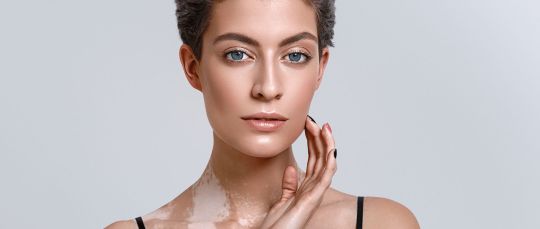
Vitiligo is a chronic skin condition characterized by the loss of pigmentation in certain areas of the skin, resulting in white patches. Several treatment options are available to manage its symptoms and improve the appearance of the affected skin. The choice of treatment depends on the extent of the condition, the patient's preferences, and the recommendation of a dermatologist. Here are some common vitiligo treatment options:
1. Topical Corticosteroids: Topical corticosteroid creams or ointments are often prescribed to reduce inflammation and promote repigmentation in the affected areas. These creams can help even out skin tone but may have side effects if used excessively.
2. Topical Calcineurin Inhibitors: Medications like tacrolimus and pimecrolimus are used to suppress the immune response in the skin, which can help prevent the progression of vitiligo and encourage repigmentation.
3. Narrowband UVB Therapy: Narrowband ultraviolet B (NB-UVB) phototherapy is a common treatment for vitiligo. It involves exposing the affected skin to UVB light, which can stimulate the production of melanocytes (pigment-producing cells) and encourage repigmentation. This therapy is typically administered in a dermatologist's office.
4. Psoralen plus UVA (PUVA) Therapy: PUVA therapy involves taking a medication called psoralen and then exposing the skin to UVA light. This combination can help repigment the skin. However, PUVA therapy carries some risks and side effects, so it's usually reserved for cases where other treatments have failed.
5. Excimer Laser: Excimer lasers deliver targeted UVB light to the affected skin areas, helping to stimulate melanocyte production and repigmentation. This therapy is particularly effective for small patches of vitiligo.
6. Micropigmentation (Tattooing): In cases where other treatments are ineffective, micropigmentation can be an option. It involves tattooing the depigmented areas with pigment that matches the surrounding skin, effectively camouflaging the white patches.
7. Depigmentation: In some cases, when vitiligo affects a large portion of the body, depigmentation of the remaining skin may be an option. This involves using topical creams to remove pigmentation from the unaffected skin, creating a uniform appearance.
8. Topical Steroid-Sparing Agents: Some newer medications, such as JAK inhibitors like tofacitinib and ruxolitinib, have shown promise in the treatment of vitiligo by modulating the immune response in the skin.
Leugo Kit is a prominent and prevailing treatment therapy for Vitiligo. It is an ayurvedic kit which can get rid of this disease soon. Leugo Kit is the most effective treatment for vitiligo or leucoderma skin disorder.
You may visit www.vitiligocare.co to buy Leugo kit or you may contact at +91 8657-870-870
0 notes
Text
Melasma: Understanding and Treatment by Cheyanne Mallas

Melasma is a common skin condition characterized by the development of brown or grayish-brown patches on the face, primarily affecting women says Cheyanne Mallas. This condition is often associated with hormonal changes, sun exposure, and genetic predisposition. Melasma can be a distressing condition for individuals, leading to a significant impact on their self-esteem and quality of life. Therefore, it is important to understand the causes, diagnosis, and treatment options for melasma to effectively manage this condition says Cheyanne Mallas.
Causes and Risk Factors:
The exact cause of melasma is not fully understood; however, several factors are believed to contribute to its development. Hormonal changes, such as those occurring during pregnancy or while taking hormonal contraceptives, are known to trigger melasma. Sun exposure is another major factor, as ultraviolet (UV) radiation stimulates the production of melanin, the pigment responsible for skin color. Genetic factors also play a role, as individuals with a family history of melasma are more likely to develop the condition.
Diagnosis:
The diagnosis of melasma is primarily clinical, based on the characteristic appearance of hyperpigmented patches on the face. A thorough medical history and physical examination are crucial to rule out other conditions that may present with similar symptoms. Dermoscopy, a non-invasive technique that magnifies the skin's surface, may be used to aid in the diagnosis by highlighting specific features of melasma.
Treatment Options:
The management of melasma involves a combination of preventive measures, topical medications, and procedural interventions. The primary goal of treatment is to reduce pigmentation and prevent its recurrence. Here are the commonly used treatment options:
1. Sun protection: Sunscreen with a high sun protection factor (SPF) should be applied daily, even on cloudy days. Wearing wide-brimmed hats, sunglasses, and seeking shade during peak sun hours are also recommended.
2. Topical medications: Hydroquinone is a widely used depigmenting agent that inhibits melanin production. It is available over-the-counter in lower concentrations and by prescription in higher strengths. Other topical agents such as retinoids, corticosteroids, and azelaic acid may be prescribed in combination with hydroquinone to enhance its effectiveness.
3. Chemical peels: Superficial chemical peels, using agents such as glycolic acid or trichloroacetic acid, can help improve melasma by exfoliating the outer layers of the skin and reducing pigmentation.
4. Laser and light-based therapies: Various laser and light-based treatments, such as intense pulsed light (IPL) and fractional laser therapy, have shown promising results in reducing melasma. These treatments work by targeting melanin and breaking down excess pigmentation.
5. Oral medications: In certain cases, oral medications, such as tranexamic acid or oral contraceptives, may be prescribed to help regulate hormonal imbalances and reduce melasma.
Conclusion:
Melasma is a common skin condition that primarily affects women, causing brown or grayish-brown patches on the face. It is often associated with hormonal changes and sun exposure says Cheyanne Mallas. The management of melasma involves a multifaceted approach, including sun protection, topical medications, and procedural interventions. With proper treatment and adherence to preventive measures, melasma can be effectively controlled, leading to improved skin appearance and enhanced quality of life for individuals affected by this condition.
#Cheyanne Mallas#CheyanneMallas#CheyanneMallasPA#Cheyanne Mallas PA#Cheyanne Mallas California#CheyanneMallasCalifornia
0 notes
Text
Dark Patches On The Skin- How Can They Be Treated?
Everyone dreams for clear and glowing skin. But due to factors like extreme sun-exposure, and hormonal imbalance, many face dark spots on their skin. These different shapes of dark spots on the skin are the pigmentation stubborn to go by themselves. Pigmentation spots are usually harmless. But they affect appearances which results in losing self-esteem and confidence.
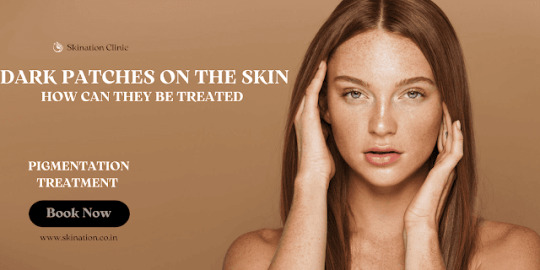
In this blog, we will explore what causes dark patches on the skin and delve into various treatments and remedies to help you achieve a more even complexion. Meanwhile, reference to create this blog has been taken from skin experts of pigmentation treatment in South Delhi. Let’s start with understanding what pigmentation is.
What is Pigmentation?
Pigmentation refers to the darkening of patches of skin due to an overproduction of melanin, the pigment responsible for skin, hair, and eye colour. It can occur in various forms, including:
Melasma: Commonly known as the "pregnancy mask," melasma is triggered by hormonal changes and often affects pregnant women. It results in dark patches, typically on the face.

Sunspots (Solar Lentigines): These are caused by prolonged sun exposure and appear as flat, brownish spots on areas frequently exposed to the sun.
Post-Inflammatory Hyperpigmentation (PIH): This occurs after skin injuries or inflammation, such as acne, cuts, or burns, and can leave dark spots once the injury heals.
Age Spots (Lentigines): These are small, dark spots that often appear on areas frequently exposed to the sun, such as the face and hands, as we age.
Freckles: Freckles are hereditary and can darken with sun exposure.
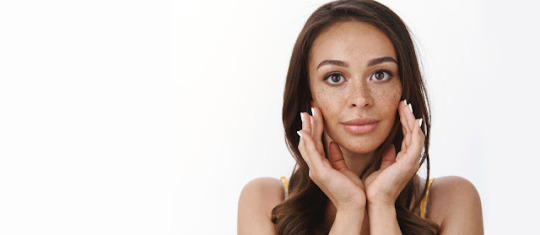
After understanding the different types of pigmentation let's learn about various treatments and remedies to address these skin concerns.
Treatments for Dark Patches on the Skin
Chemical Peels: Chemical peels are a non-invasive procedure. It involves applying a solution to the top-most surface of the skin causing the top layer to peel away. This helps reduce pigmentation, revealing fresher skin beneath. Chemical peels are effective for treating various pigmentation issues, including sunspots and melasma.
Mesotherapy: Mesotherapy is an injectable procedure. In this skin revitalising treatment customised cocktail of vitamins, enzymes, and pigmentation-reducing substances is injected into the skin. It's used to target and lighten pigmentation, providing a more even skin tone.
Laser Toning: Laser toning uses controlled laser energy to break down melanin in pigmented areas, making it effective for treating pigmentation issues like freckles, sunspots, and age spots.
Cosmelan Peel: The Cosmelan Peel is a professional treatment that combines chemical peeling with depigmenting agents to reduce pigmentation. It's particularly effective for melasma and stubborn pigmentation problems.
Pink Peel Treatment: The Pink Peel is a gentle chemical peel that exfoliates the skin, reducing pigmentation and improving skin texture. It's suitable for various pigmentation concerns and leaves the skin looking refreshed and revitalised.
Derma Infusion Treatment: This treatment involves the use of a specialised device to exfoliate and infuse the skin with serums tailored to target pigmentation issues. It offers a gentle yet effective approach to pigmentation reduction.
Preventative Measures and Home Remedies
While treatments can significantly reduce the appearance of dark patches on the skin, prevention and home remedies also play a vital role in maintaining clear and even-toned skin:
Sun Protection: The most crucial step in preventing further hyperpigmentation is to protect your skin from the sun. This includes wearing sunscreen with an SPF of 30 or higher, seeking shade, and wearing protective clothing.
Topical Antioxidants: Incorporating antioxidants like vitamin C into your skincare routine can help protect the skin from free radicals and reduce the risk of hyperpigmentation.
Gentle Exfoliation: Exfoliating the skin regularly can help remove dead skin cells, allowing new, even-toned skin to surface.
Natural Remedies: Some natural remedies like aloe vera, lemon juice, and licorice extract are believed to have skin-lightening properties. However, use them with caution and consult a dermatologist, as they may not be suitable for all skin types.
Stay Hydrated: Proper hydration is essential for healthy skin. Drink plenty of water to keep your skin moisturized and supple.
Conclusion
Dark patches on the skin, or hyperpigmentation, can be a source of frustration and self-consciousness for many individuals. However, with a variety of treatment options available, ranging from topical creams to cosmetic procedures, it's possible to achieve a more even complexion. Prevention, in the form of sun protection and a good skincare routine, is also key to keeping dark patches at bay. Consulting with a dermatologist can help you determine the best approach for your specific skin type and condition, ensuring that you regain confidence in your skin's appearance.

If you are looking for a pigmentation treatment specialist, you can find the best skin doctor in Chhattarpur, Delhi for pigmentation at Skination Clinic. This clinic is managed by Dr. Swati Agarwal (aesthetic treatments skin specialist) and Dr. Rajat Gupta (Expert of laser based treatments). They combinedly provide various non-invasive and laser based pigmentation treatments including Chemical peel, mesotherapy, pink peel etc. To avail the benefits, pay a visit to Skination Clinic now!
Original Source:- https://skinationclinic.blogspot.com/2023/09/dark-patches-on-skin-how-can-they-be.html
#Pigmentation treatment in South Delhi#Best Skin doctor in chhattarpur#Pigmentation#Skination Clinic#Dark Patches On The Skin#Treatments for Dark Patches on the Skin#Home Remedies
0 notes
Text
Melanogenesis Inhibition for Treating Hyperpigmentation Disorders
The Quest for the Ideal Depigmenting Agent: Mechanisms, Challenges, and Promise for the Future
An ideal depigmenting compound that can safely and permanently reduce unwanted skin pigmentation remains an elusive goal in dermatology. The complex biology of melanogenesis poses significant obstacles. Hyperactive melanocytes must be selectively targeted to avoid broad suppression of melanin…

View On WordPress
0 notes
Text
Unlocking Confidence - Monobenzone (Benoquin) in Vitiligo Treatment
Vitiligo, a skin disorder characterized by the loss of pigment-producing cells, can have a profound impact on one's confidence and self-esteem. Individuals with vitiligo often seek effective treatments to regain their skin's natural color and restore their confidence. Monobenzone, commonly known as Benoquin, has emerged as a key player in the vitiligo treatment landscape, offering hope to those grappling with this condition.
Understanding Vitiligo:
Vitiligo manifests as white patches on the skin due to the destruction of melanocytes, the cells responsible for producing melanin. Melanin gives color to the skin, hair, and eyes. The exact cause of vitiligo remains unclear, but factors such as genetics, autoimmune disorders, and environmental triggers may contribute to its development.
Benoquin: A Glimpse into Monobenzone's Role:
Monobenzone, marketed under the brand name Benoquin, is a topical depigmenting agent that has garnered attention for its potential in vitiligo treatment. Unlike other treatments that focus on repigmentation, Benoquin takes a different approach by depigmenting the remaining normal skin, aiming for a more uniform appearance.
How Does Benoquin Work?
Benoquin works by inhibiting the activity of tyrosinase, an enzyme crucial for melanin production. By suppressing melanin synthesis, Benoquin helps lighten the unaffected skin, making it match the depigmented areas affected by vitiligo. This depigmentation process strives to create a more consistent and balanced skin tone.
Safety and Considerations:
Before incorporating Benoquin into a vitiligo treatment plan, it is crucial to consult with a dermatologist. This ensures that the product is used appropriately and that potential side effects are understood. Benoquin should only be applied to affected areas under the guidance of a medical professional, as misuse may result in uneven pigmentation or other adverse reactions.
Combination Therapies:
While Benoquin is gaining recognition for its unique approach to vitiligo treatment, it is often used in combination with other therapies for a comprehensive approach. Phototherapy, corticosteroids, and other topical treatments may be recommended alongside Benoquin to enhance results and minimize side effects.
The Journey to Confidence:
Vitiligo can take an emotional toll on individuals, impacting their self-image and confidence. Benoquin, with its depigmenting properties, contributes to the holistic treatment of vitiligo by offering an option for individuals seeking a more uniform skin tone. As with any medical treatment, patience is key, as results may take time to manifest.
In the pursuit of effective vitiligo treatment, Monobenzone, or Benoquin, has emerged as a promising option. Its depigmenting properties, when used under professional guidance, contribute to achieving a more uniform skin tone. As individuals embark on their journey towards confidence and self-acceptance, the integration of Benoquin into a comprehensive vitiligo treatment plan can be a significant step forward. To explore this option further and consult with experts in dermatology, individuals can consider reputable platforms like fairnglow.us for valuable information and guidance on their vitiligo treatment journey.
0 notes
Text

Mequinol Permanent Skin Lightening | Isis.gold
Transform your skin with Isis.gold Mequinol Permanent Skin Lightening! Experience the power of natural ingredients and the luxury of beautiful, brighter skin with our revolutionary product.
0 notes
Text
Is Tri-Luma good for hyperpigmentation?
Hyperpigmentation is a common skin condition characterized by patches of darkened skin caused by an excess production of melanin. It can be triggered by various factors such as sun exposure, hormonal changes, acne scars, and aging. Tri-Luma is a popular topical cream marketed as a treatment for hyperpigmentation. In this article, we will explore the effectiveness of Tri-Luma in addressing hyperpigmentation and discuss its benefits, potential side effects, and alternative options.
Understanding Tri-Luma: Tri-Luma is a combination cream containing three active ingredients: hydroquinone, fluocinolone acetonide, and tretinoin. Each ingredient plays a crucial role in reducing hyperpigmentation:
Hydroquinone: This depigmenting agent inhibits the production of melanin, helping to lighten dark spots and even out skin tone.
Fluocinolone acetonide: As a corticosteroid, it reduces inflammation and prevents further skin discoloration.
Tretinoin: Also known as Retin-A, tretinoin helps exfoliate the skin, promotes cell turnover, and enhances the penetration of other active ingredients.
Efficacy of Tri-Luma:
Tri-Luma has shown promising results in the treatment of certain types of hyperpigmentation. Studies have demonstrated its effectiveness in reducing melasma, a common form of hyperpigmentation often triggered by hormonal changes or sun exposure. Tri-Luma's combination of ingredients works synergistically, targeting various aspects of hyperpigmentation to achieve noticeable improvements in skin tone and texture.
Benefits of Tri-Luma:
Targeted Approach: The combination of hydroquinone, fluocinolone acetonide, and tretinoin allows Tri-Luma to address multiple factors contributing to hyperpigmentation simultaneously.
Visible Results: Many users have reported visible improvements in skin tone and a reduction in dark spots after consistent use of Tri-Luma.
Convenience: Tri-Luma is available as a prescription cream, making it easily accessible under the guidance of a healthcare professional.
Potential Side Effects:
While Tri-Luma can be effective, it's important to be aware of potential side effects. Common side effects may include mild irritation, redness, dryness, or peeling of the skin. Some individuals may experience hypersensitivity reactions or allergic contact dermatitis. It is crucial to follow your healthcare provider's instructions and discontinue use if you experience severe discomfort or adverse reactions.
Alternatives to Tri-Luma:
If Tri-Luma cream does not suit your needs or if you prefer exploring alternative options, there are some alternatives worth considering:
Over-the-counter (OTC) Treatments: OTC creams containing ingredients like vitamin C, niacinamide, kojic acid, or azelaic acid can help with mild hyperpigmentation. These products are generally milder and more affordable than Tri-Luma.
Chemical Peels: Performed by dermatologists, chemical peels involve the application of a chemical solution to exfoliate the top layers of the skin. They can effectively target hyperpigmentation and promote skin renewal.
Laser Treatments: Certain laser therapies, such as intense pulsed light (IPL) or fractional lasers, can effectively target hyperpigmentation by breaking up excess melanin in the skin.
Conclusion:
Tri-Luma is a popular prescription cream that has shown effectiveness in treating hyperpigmentation, primarily melasma. However, it's essential to consult with a healthcare professional before using Tri-Luma to understand its suitability for your specific condition and skin type. Be mindful of potential side effects and consider alternative treatments based on your individual preferences and needs. Remember, maintaining a consistent skincare routine, adequate sun protection, and a healthy lifestyle can also contribute to improved skin health and reduced hyperpigmentation.
0 notes